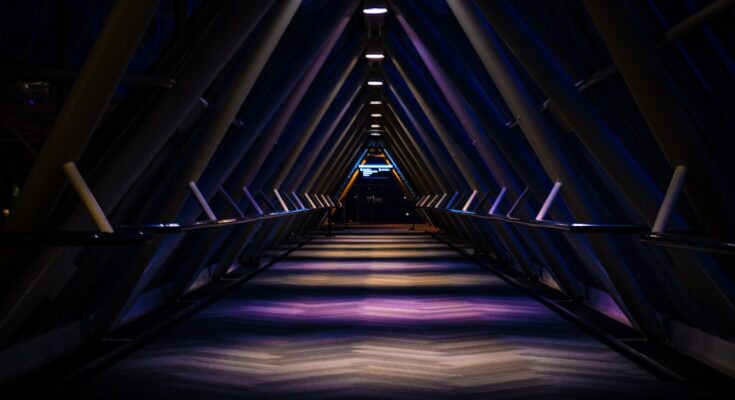As an aspiring music producer, I often find myself lost in the neon-lit world of synthwave, a genre that feels like a time capsule from the 1980s. Synthwave is not just a musical style; it’s a cultural phenomenon that encapsulates the essence of a decade defined by its bold colors, futuristic dreams, and, let’s be honest, some questionable fashion choices. I remember the first time I stumbled upon a synthwave track while scrolling through Spotify.
It was like stepping into a DeLorean and hitting 88 mph—suddenly, I was transported to a world of retro-futurism, where synthesizers ruled and the only limit was my imagination. What fascinates me most about synthwave is its ability to evoke nostalgia while simultaneously feeling fresh and innovative. It’s a genre that pays homage to the past while looking forward to the future.
One friend, a fellow producer with an impressive collection of vintage gear, once quipped, “Synthwave is like the mixtape your cool uncle made for you when you were ten—full of hits, but also a little cheesy.” And he’s right! There’s something delightfully campy about synthwave that makes it both endearing and exciting.
It’s a genre that invites you to embrace your inner child while also challenging you to create something new.
Key Takeaways
- Synthwave is a genre that embraces the nostalgic sounds of the 1980s, characterized by retro production techniques and atmospheric compositions.
- Recreating the iconic 80s sound involves using analog synthesizers and drum machines to capture the essence of the era’s music.
- Utilizing analog synthesizers and drum machines is essential in achieving the authentic sound of synthwave, as they were the primary tools used in 80s music production.
- Embracing retro production techniques such as tape saturation and analog recording methods adds authenticity to synthwave music.
- Crafting melodic and atmospheric compositions is a key aspect of synthwave, as it aims to evoke the nostalgic and dreamy feel of 80s soundtracks.
Recreating the Iconic 80s Sound
Recreating the iconic sound of the 80s is no small feat, but it’s a challenge I relish. The first step in this journey is understanding the sonic palette that defined the era. Think lush synth pads, punchy bass lines, and catchy melodies that stick in your head like bubblegum pop.
I often find myself poring over classic albums from artists like John Carpenter and Vangelis, dissecting their arrangements and production techniques. It’s like being a musical archaeologist, digging through layers of sound to uncover the secrets of the past. One of my favorite anecdotes involves a late-night jam session with some friends.
We decided to cover “Take On Me” by A-ha, and as we struggled to replicate that iconic synth riff, we ended up creating our own version that was more synthwave than 80s pop. We laughed as we realized we had inadvertently stumbled upon a new sound. “Maybe we should just call it ‘Synthwave On Me’,” one friend joked, and we all burst into laughter.
It was moments like these that reminded me that while recreating the past is important, it’s equally vital to inject my own personality into the music.
Utilizing Analog Synthesizers and Drum Machines
When it comes to crafting synthwave tracks, there’s no substitute for analog synthesizers and drum machines. The warmth and character they bring to a production are simply unmatched by their digital counterparts. I’ve spent countless hours scouring online marketplaces for vintage gear, often finding myself in bidding wars over classic Roland and Korg machines.
There’s something exhilarating about the hunt—like being on a treasure quest for sonic gold. I remember one particularly memorable day when I finally got my hands on a Roland Juno-106. As I plugged it in and started playing, I felt like I had unlocked a secret door to the 80s.
The lush chords and rich bass lines practically begged to be turned into a track. I called up my friend who had been waiting for this moment as eagerly as I had. “Dude, you have to come over!
I think I just found the holy grail of synths!” I exclaimed. He arrived within minutes, and we spent hours experimenting with different sounds, laughing at our attempts to recreate classic tracks while simultaneously creating something entirely new.
Embracing Retro Production Techniques
Embracing retro production techniques is essential for capturing the essence of synthwave. From using tape saturation to layering sounds in ways that feel organic and imperfect, these methods breathe life into my tracks. I often find myself watching YouTube tutorials from seasoned producers who share their insights on how to achieve that vintage vibe.
One particularly memorable video featured a producer who claimed that “the secret ingredient is always a little bit of chaos.” I chuckled at this notion but soon realized he was onto something. During one of my own production sessions, I decided to experiment with some unconventional recording techniques. Instead of relying solely on MIDI, I recorded live instruments and vocals, allowing for those delightful imperfections that make music feel human.
My roommate walked in as I was layering some guitar riffs and remarked, “This sounds like if Stranger Things had a rock band.” It was an unexpected compliment that made me realize how embracing retro techniques could lead to fresh ideas.
Crafting Melodic and Atmospheric Compositions
Crafting melodic and atmospheric compositions is where the magic truly happens in synthwave production. The genre thrives on creating soundscapes that transport listeners to another time and place. I often find myself daydreaming about neon-lit cityscapes while working on my tracks, letting the music guide my imagination.
One evening, as I was layering synth pads and arpeggios, I envisioned a bustling metropolis at night—cars zooming by under glowing streetlights, people dancing in clubs filled with smoke and flashing lights. I remember sharing this vision with a fellow producer during a coffee break at our local café. “You know,” I said, “I want my music to feel like a movie soundtrack—something that tells a story without words.
It’s like each track is a scene from an 80s film waiting for its hero.” His words resonated with me, inspiring me to dig deeper into my compositions and focus on creating narratives through sound.
Incorporating Nostalgic Sound Design
Incorporating nostalgic sound design is crucial for achieving that authentic synthwave feel. From vintage vocal samples to iconic sound effects reminiscent of arcade games, these elements add depth and character to my tracks. I often find myself rummaging through sample packs filled with retro sounds, searching for that perfect snippet that will evoke memories of childhood gaming or late-night movie marathons.
One day, while experimenting with sound design, I stumbled upon an old VHS tape filled with recordings from my childhood. As I played it back, I was struck by the grainy quality of the audio—the crackles and pops were pure gold! Inspired by this discovery, I decided to sample snippets from the tape and incorporate them into my latest track.
When I played it for my friends later that week, one of them exclaimed, “This sounds like nostalgia wrapped in a synth!” It was moments like these that reminded me how powerful sound design can be in evoking emotions and memories.
Mixing and Mastering for Authenticity
Mixing and mastering are often seen as the final steps in music production, but for me, they are integral parts of capturing authenticity in synthwave tracks. The goal is to create a polished sound while retaining the warmth and character that define the genre. I’ve spent countless hours experimenting with different mixing techniques—using analog emulation plugins to recreate that vintage vibe while ensuring each element shines through.
During one particularly intense mixing session, I found myself wrestling with a track that just wouldn’t come together. Frustrated, I called up my mentor—a seasoned producer who has worked with some big names in the industry—for advice. “Sometimes,” he said sagely over the phone, “you just need to take a step back and listen with fresh ears.” His words resonated with me as I realized I had been too close to the project.
After taking a break and returning with renewed energy, I was able to mix the track in a way that felt authentic and true to the genre.
Capturing the Essence of 80s Soundtracks in Modern Productions
Capturing the essence of 80s soundtracks in modern productions is what truly excites me as an amateur music producer. The ability to blend nostalgia with contemporary elements creates a unique listening experience that resonates with both old-school fans and new listeners alike. I often find myself revisiting classic films from the 80s—films like “Blade Runner” or “The Breakfast Club”—to draw inspiration from their soundtracks.
One evening while watching “The Terminator,” I couldn’t help but marvel at how the score perfectly complemented the film’s atmosphere. It sparked an idea for my next track—a blend of driving rhythms and haunting melodies reminiscent of those iconic scores. When I shared this idea with my friends during our next jam session, one of them exclaimed, “Dude!
Let’s make it sound like we’re scoring an epic chase scene!” We all laughed at the absurdity of it but quickly got to work on crafting something that felt cinematic yet distinctly synthwave. In conclusion, my journey as an ambitious male amateur music producer has been filled with exploration and discovery within the vibrant world of synthwave. From understanding its roots to recreating iconic sounds and embracing retro techniques, every step has been an adventure worth taking.
As I continue to hone my craft and connect with fellow music enthusiasts, I’m reminded that music is not just about notes on a page; it’s about capturing emotions, telling stories, and creating experiences that resonate across generations. So here’s to more late-night jam sessions, nostalgic soundscapes, and endless possibilities in this electrifying genre!
If you’re interested in learning more about music production and creating your own unique sound, check out the article Music Making with Your PC on Music Charts 24. This article provides tips and tricks for using your computer to make music, which can be a valuable resource for aspiring musicians looking to hone their craft. By combining the knowledge from this article with the techniques outlined in Synthwave Mastery: Recreating the Magic of 80s Soundtracks, you can take your music production skills to the next level and create truly memorable tracks.
FAQs
What is Synthwave?
Synthwave is a genre of electronic music that is heavily inspired by 1980s film soundtracks and video game music. It often features a nostalgic, retro-futuristic sound with elements of synthesizers, drum machines, and a focus on melody and atmosphere.
What are the key elements of 80s soundtracks that are often recreated in Synthwave music?
Key elements of 80s soundtracks that are often recreated in Synthwave music include pulsing synthesizer arpeggios, lush pads, gated reverb on drums, and a focus on melody and emotion. These elements contribute to the nostalgic and cinematic quality of the music.
How can one recreate the magic of 80s soundtracks in Synthwave music?
To recreate the magic of 80s soundtracks in Synthwave music, producers often use vintage synthesizers and drum machines, as well as software emulations of classic gear. They also pay attention to production techniques such as using analog-style effects and carefully crafting melodies and atmospheres that evoke the feeling of 80s film scores.
What are some popular software and hardware tools used in creating Synthwave music?
Popular software tools used in creating Synthwave music include digital audio workstations (DAWs) such as Ableton Live and Logic Pro, as well as virtual synthesizers like Serum, Massive, and Sylenth1. Hardware tools often used include synthesizers like the Roland Juno-106, Yamaha DX7, and Korg M1, as well as drum machines like the Roland TR-808 and TR-909.
Are there any specific production techniques that are commonly used in Synthwave music?
Common production techniques used in Synthwave music include sidechain compression to create the “pumping” effect often heard in 80s music, as well as the use of analog-style effects such as tape saturation, chorus, and reverb. Additionally, careful attention is paid to creating authentic-sounding synth patches and drum sounds.



